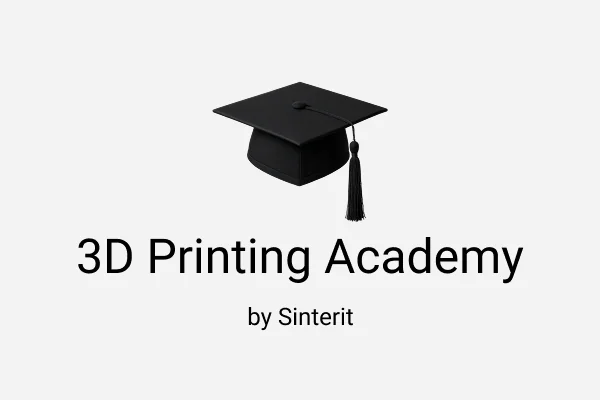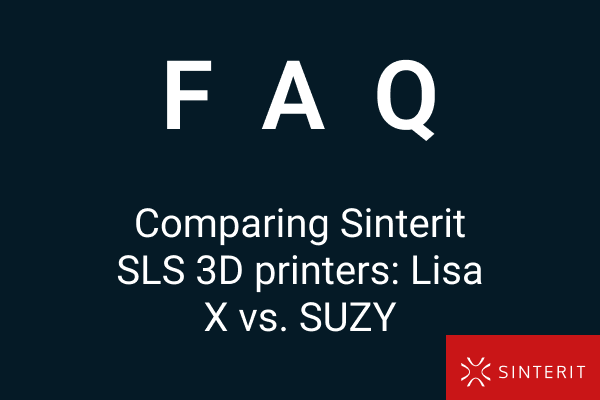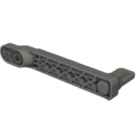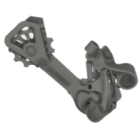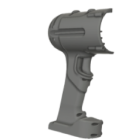Safety in SLS 3D printing
In this article, we explain safety issues concerning SLS 3D printing, especially pollination and the harmfulness of vapors. What makes the process safe? Let’s find out.
The safety of SLS 3D printing – assumptions
Sinterit is a pioneer in the compact SLS 3D printing branch. With almost 10 years of inventing, producing, upgrading, and selling thousands of SLS 3D printers we gathered a lot of data about safety. We love science and gaining knowledge which is why we started cooperation with an external laboratory whose task was to examine the safety of users of 3D printers operating in SLS technology.
The powder used in selective laser sintering (SLS) has a very low granulation. At first glance, it’s closer to dust. During the SLS 3D printing process it melts. We decided to test both pollination and vapors. To do so we have chosen three external labs to perform tests.
Pollination tests
SLS 3D printing is a process that contains several phases. It starts with filling the SLS 3D printer with the powder. Next, after the print is made, you need to take out the print-out and clean it. The last phase is cleaning the printer and other devices used for post processing which in Sinterit’s case is PHS (Powder Handling Station).
SLS 3D printing phases:
1. Filling the printer with powder
2. Post-processing printouts
3. Cleaning the printer and other devices
We conducted tests in dedicated rooms so that the results were not influenced by external factors. To make them as close as possible to the conditions in which most users use printers, we decided to test them in a room equipped only with ;poor gravity ventilation. The test room was isolated from other premises.
The research results turned out to be very interesting. Two, out of three phases were completely safe which means that there were no signs of pollination during the filling of the printer (phase 1) and cleaning it (phase 3). It was especially an important discovery because some of our clients used to ask if pouring the powder into the printer is as safe as using for example cartridges filled with powder. Yes it is.
The same situation was when we cleaned the devices, though it is important to use a Vacuum cleaner with ATEX certification.
The phase that exhibited increased pollution was solely the second one – post-processing the printouts. The prior version of PHS met the standard in most countries, except for two with notably strict regulations. The inclusion of a plexiglass cover allows the MultiPHS to align with even the most stringent safety guidelines. As per dust standards, using a mask is unnecessary for the majority of powders.
Of course, to minimize any contact, you can always follow the recommendation of using an FFP2 mask. It’s also advisable to use gloves and goggles – these protective measures are recommended for all our customers. The only powder in the Sinterit portfolio that necessitates a higher level of protection, including masks, gloves, eyeglasses, and protective suit, is PA11 CF. This is standard for powders containing carbon fiber additions.
ATEX safety certificate
ATEX, derived from the French phrase ATmosphères EXplosibles, refers to potentially explosive atmospheres. The current safety standard is the EU directive ATEX 2014/34/UE, which has been in effect since 2016. This directive applies to all devices carrying an explosion risk.
ATEX certification encompasses various classes. In the case of SLS devices like those in the Sinterit Performance set (including Lisa X, MultiPHS, Sandblaster SLS, and ATEX Vacuum), the relevant class applies to machines generating airborne dust without the risk of ignition, meaning they do not produce sparks or open flames. The certification process is thorough, involving a series of tests to assess the potential for spontaneous ignition of the dust cloud based on its density or longevity.
Our Sinterit Performance set has obtained ATEX certification through a meticulous process conducted by an independent third party. This involved a comprehensive examination of product construction and documentation, recommendations for any necessary changes, and the subsequent issuance of the certificate upon successful implementation.
Vapor tests
After consultation with an external testing laboratory, two tests were performed – chromatography and thermogravimetry. We submitted three different SLS powders for testing:
● PA12 Industrial
● PA11 Onyx
● Flexa Performance
Two external, certificated labs performed tests to check whether the vapors of chemical compounds are harmful. The model test room had 25 m2. We conducted tests for extreme conditions where we melted powder to 300 degrees (the processing window of our materials is 120-190 degrees).
After identifying the substances that are emitted and determining their concentrations based on a simple calculation, we came to the conclusion that the process is safe if ventilation is maintained at 50 m3/h (for reference – a simple bathroom fan gives 100 to 300 m3 per hour).
In many cases, this means good and efficient gravity ventilation.
Summing up
Powder dust in the air – findings
According to our research, the process itself is safe, and only in countries with the most restrictive standards it does require the use of a mask when cleaning the print on PHS to meet the highest standards.
Vapors during printing – findings
The processing of the powder itself is safe and only requires the use of proper ventilation. According to our research, for a room of 25m2 a flow rate of 50m3 per hour is sufficient, which simply means efficient gravity or mechanical ventilation.
